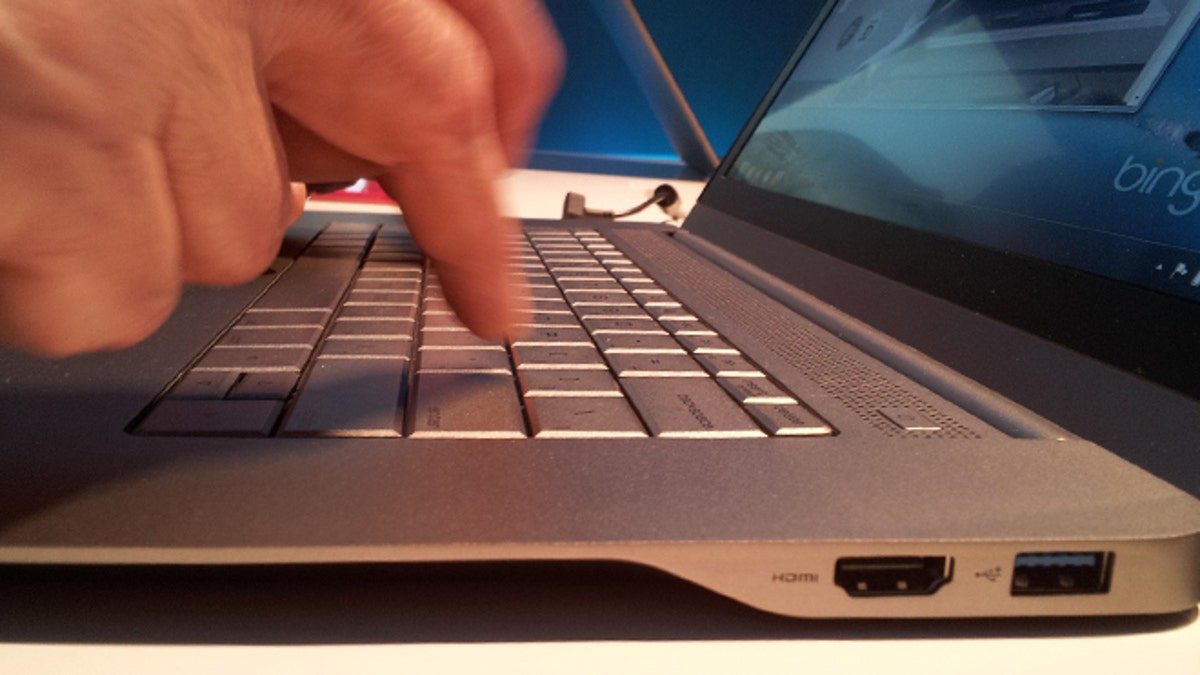
Just how secure is YOUR password? (FoxNews.com / Jeremy A. Kaplan)
Home networks used to be the realm of hardcore techies. Now most homes have smartphones, tablets, laptops, TVs, streaming video boxes and video game consoles. That makes a home network practically mandatory.
Fortunately, today's networks are much easier to set up, thanks to wireless networks. No one likes running cables all over the house.
Despite the convenience, wireless networks do have drawbacks. For example, speed and range can vary wildly. Thankfully, these both improve with every generation of Wi-Fi.
The latest 802.11ac standard is no exception. Manufacturers boast speeds more than 3 times faster than previous Wi-Fi generations. That's quite a jump! To get that speed, you'll need to buy a new router, of course. Is it worth the cost?
For those not up on the jumble of letters and numbers that relate to wireless standards, let me explain. The designation 802.11 is the Institute of Electrical and Electronics Engineers standard for Wi-Fi. The letter following 802.11 indicates the version of the standard.
Up until this point, consumer routers have mainly used 802.11b, 802.11g and 802.11n. These are usually listed as 'b,' 'g' and 'n' on product packaging. You'll also see 802.11a support on some routers, but don't confuse that with 802.11ac.
For each new Wi-Fi standard, speed and range increase. Plus, there are new encryption methods for security, new frequencies and other complex behind-the-scenes technology.
Now that there are more than 26 Wi-Fi revisions, we're into the double letters. That makes the newest consumer version 802.11ac, or Wireless AC, or 'ac' or however else companies will choose to brand it.
So, back to whether or not you should buy. Let's take a look at the pros and cons.
On the pro side, 802.11ac is blazing fast. At an advertised 1.75 gigabits per second, it's faster than a high-end wired home network. Right now, wired home networks top out at 1 gigabit.
In fact, 802.11ac can stream high-definition video to several gadgets at once. In a media-heavy home, that is a definite plus.
As far as range goes, solid figures are hard to come by. It really depends on your home, router placement and other factors. Still, you should see a more solid connection than older Wi-Fi standards.
More: 5 ways to boost your Wi-Fi range with any router
Unfortunately, that's about it for the pro side. The cons are going to take a bit longer.
The major drawback is compatibility. To take advantage of 802.11ac features, you need gadgets that support 802.11ac. While it's been out for a year, very few gadgets support it.
I've seen some laptops with it, and a few smartphones, including the Samsung Galaxy S4. But it will take a while before every new gadget has it.
Just supporting 802.11ac isn't enough either. To get the full benefit, a gadget has to support the correct sub frequencies or have multiple antennas. Lower-cost models probably won't for a while.
So, you might get anywhere from 450 megabits per second to 1.75 gigabits per second performance depend on your gadget. True, 450Mbps is still very fast, but it's not the connection you paid for.
Don't forget the expense of buying gadgets with 802.11ac support. Of course, nobody said you have to upgrade everything right away.
Routers with 802.11ac also support all the old Wi-Fi standards. Your existing gadgets will still work. They just won't be any faster than they already are.
More: How to speed up your Wi-Fi router
Speaking of cost, though, routers with 802.11ac aren't cheap. They start at $160 online and go up from there. So it's not a small investment.
On the plus side, these are high-end routers, so you get all the latest goodies. Think high-end encryption, parental control extras, multiple networks, multimedia packet shaping and so on. Plus they have a gigabit wired connection. Once you buy, you shouldn't have to upgrade for quite a few years.
In the end, it comes down to how you use the Internet. If you have one or two gadgets you use for social media and email, 802.11ac isn't for you. You're much better off sticking with your current router, or buying a low-cost 802.11n model.
If you need a new router, however, and your home is filled with gadgets pulling down gigabytes of Internet traffic a day, definitely give 802.11ac a look. It might not do you good right away, but it will definitely help in the future.
For everyone else, I'd wait until 802.11ac routers drop in price and you already own a few 802.11ac gadgets.
Whatever you buy, don't forget to enable the encryption. This will keep neighbors and criminals off your network. Click here to learn how.
Copyright 2013, WestStar Multimedia Entertainment. All rights reserved.
Kim Komando hosts the nation's largest talk radio show about consumer electronics, computers and the Internet. To get the podcast, watch the show or find the station nearest you, visit: www.komando.com/listen. To subscribe to Kim's free email newsletters, sign-up at: www.komando.com/newsletters.




















